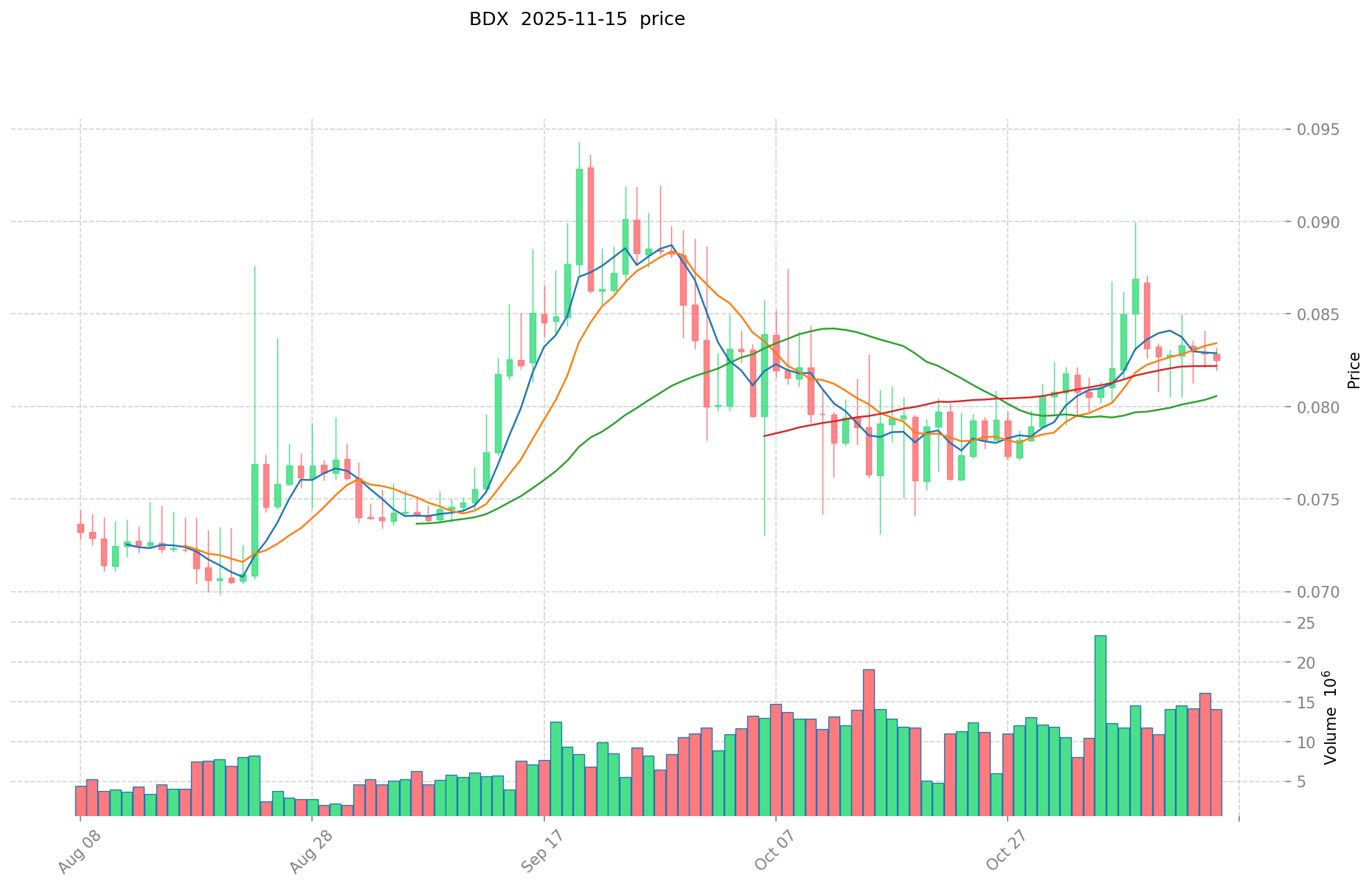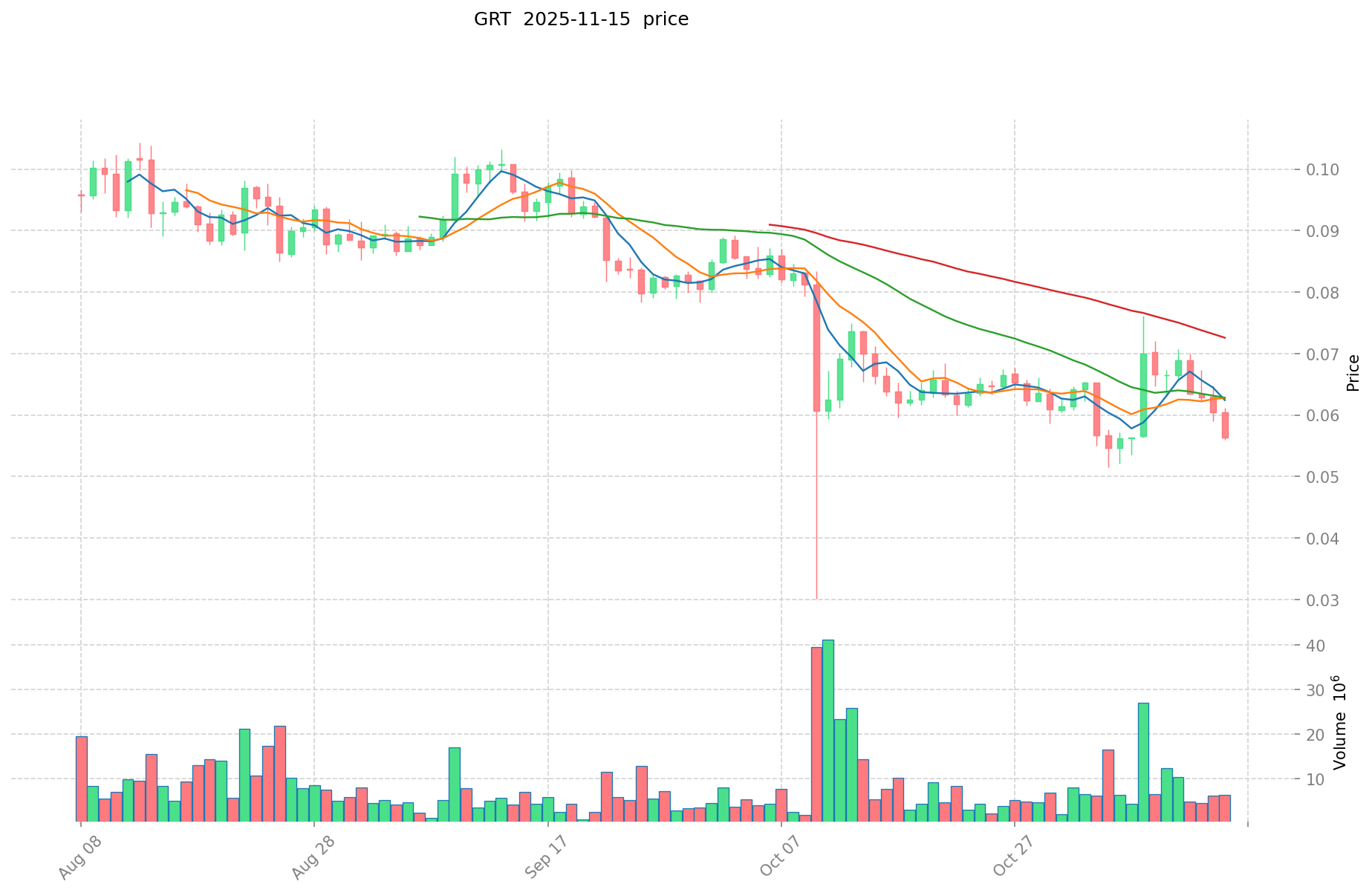BDX vs GRT: The Battle of Emerging Technologies in Smart City Development
Introduction: BDX vs GRT Investment Comparison
In the cryptocurrency market, the comparison between Beldex (BDX) vs The Graph (GRT) has always been a topic that investors can't ignore. The two not only have significant differences in market cap ranking, application scenarios, and price performance, but also represent different crypto asset positioning.
Beldex (BDX): Since its launch in 2018, it has gained market recognition for its focus on confidentiality and privacy in decentralized applications.
The Graph (GRT): Introduced in 2020, it has been hailed as the "Google of blockchains" for its role in indexing and querying blockchain data.
This article will provide a comprehensive analysis of the investment value comparison between BDX and GRT, focusing on historical price trends, supply mechanisms, institutional adoption, technical ecosystems, and future predictions, attempting to answer the question investors care about most:
"Which is the better buy right now?"
I. Price History Comparison and Current Market Status
BDX (Coin A) and GRT (Coin B) Historical Price Trends
- 2018: BDX reached its all-time high of $0.450785 on December 17, 2018.
- 2021: GRT hit its all-time high of $2.84 on February 12, 2021, likely due to increased interest in decentralized data querying solutions.
- Comparative analysis: In the recent market cycle, BDX has fallen from its peak of $0.450785 to a current price of $0.0828, while GRT has experienced a more significant drop from its all-time high of $2.84 to $0.05682.
Current Market Situation (2025-11-15)
- BDX current price: $0.0828
- GRT current price: $0.05682
- 24-hour trading volume: BDX $1,153,209.73 vs GRT $380,179.29
- Market Sentiment Index (Fear & Greed Index): 10 (Extreme Fear)
Click to view real-time prices:
- Check BDX current price Market Price
- Check GRT current price Market Price


II. Core Factors Affecting BDX vs GRT Investment Value
Supply Mechanism Comparison (Tokenomics)
- BDX: Fixed maximum supply of 21 million tokens, with deflationary characteristics
- GRT: Inflationary token with an initial supply of 10 billion tokens and ongoing issuance
- 📌 Historical pattern: Deflationary assets like BDX tend to experience greater price appreciation during bull markets compared to inflationary tokens like GRT.
Institutional Adoption and Market Applications
- Institutional holdings: GRT has attracted more institutional interest with backing from major crypto venture funds
- Enterprise adoption: GRT has established partnerships with major Web3 projects and protocols, while BDX adoption remains primarily among retail investors
- National policies: Both tokens face similar regulatory scrutiny as utility tokens, though GRT's indexing utility provides clearer regulatory positioning
Technical Development and Ecosystem Building
- BDX technical upgrades: Limited recent development activity with focus on maintaining the network
- GRT technical development: Active development with recent upgrades to indexing protocols and subgraph infrastructure
- Ecosystem comparison: GRT has established itself as essential Web3 infrastructure powering thousands of dApps across DeFi, NFTs, and data services, while BDX ecosystem remains comparatively limited
Macroeconomic and Market Cycles
- Performance during inflation: BDX's fixed supply model theoretically provides better inflation resistance
- Macroeconomic monetary policy: Both tokens show high correlation with risk assets, negatively impacted by interest rate hikes
- Geopolitical factors: GRT's utility as data infrastructure remains constant regardless of geopolitical tensions
III. 2025-2030 Price Prediction: BDX vs GRT
Short-term Prediction (2025)
- BDX: Conservative $0.0804 - $0.0829 | Optimistic $0.0829 - $0.1127
- GRT: Conservative $0.0522 - $0.0567 | Optimistic $0.0567 - $0.0839
Mid-term Prediction (2027)
- BDX may enter a growth phase, with prices expected in the range of $0.0672 - $0.1426
- GRT may enter a growth phase, with prices expected in the range of $0.0415 - $0.1069
- Key drivers: Institutional fund inflows, ETFs, ecosystem development
Long-term Prediction (2030)
- BDX: Base scenario $0.1237 - $0.1491 | Optimistic scenario $0.1491 - $0.1878
- GRT: Base scenario $0.0967 - $0.1111 | Optimistic scenario $0.1111 - $0.1589
Disclaimer: This analysis is based on historical data and market projections. Cryptocurrency markets are highly volatile and unpredictable. This information should not be considered as financial advice. Always conduct your own research before making investment decisions.
BDX:
| 年份 | 预测最高价 | 预测平均价格 | 预测最低价 | 涨跌幅 |
|---|---|---|---|---|
| 2025 | 0.1127304 | 0.08289 | 0.0804033 | 0 |
| 2026 | 0.133999974 | 0.0978102 | 0.080204364 | 18 |
| 2027 | 0.14256325701 | 0.115905087 | 0.06722495046 | 39 |
| 2028 | 0.1602503732862 | 0.129234172005 | 0.09434094556365 | 56 |
| 2029 | 0.153426809004336 | 0.1447422726456 | 0.140400004466232 | 74 |
| 2030 | 0.187846521439459 | 0.149084540824968 | 0.123740168884723 | 80 |
GRT:
| 年份 | 预测最高价 | 预测平均价格 | 预测最低价 | 涨跌幅 |
|---|---|---|---|---|
| 2025 | 0.083916 | 0.0567 | 0.052164 | 0 |
| 2026 | 0.08929116 | 0.070308 | 0.05202792 | 23 |
| 2027 | 0.1069314372 | 0.07979958 | 0.0414957816 | 40 |
| 2028 | 0.099901094202 | 0.0933655086 | 0.069090476364 | 64 |
| 2029 | 0.1256232918213 | 0.096633301401 | 0.0869699712609 | 70 |
| 2030 | 0.158913464153944 | 0.11112829661115 | 0.0966816180517 | 95 |
IV. Investment Strategy Comparison: BDX vs GRT
Long-term vs Short-term Investment Strategies
- BDX: Suitable for investors focused on privacy-centric applications and deflationary assets
- GRT: Suitable for investors interested in Web3 infrastructure and long-term ecosystem growth
Risk Management and Asset Allocation
- Conservative investors: BDX: 30% vs GRT: 70%
- Aggressive investors: BDX: 60% vs GRT: 40%
- Hedging tools: Stablecoin allocation, options, cross-currency portfolios
V. Potential Risk Comparison
Market Risks
- BDX: Limited liquidity and market depth
- GRT: Higher correlation with overall crypto market volatility
Technical Risks
- BDX: Scalability, network stability
- GRT: Centralization of indexing nodes, potential security vulnerabilities in subgraph deployments
Regulatory Risks
- Global regulatory policies may impact GRT more due to its wider adoption and integration with major protocols
VI. Conclusion: Which Is the Better Buy?
📌 Investment Value Summary:
- BDX advantages: Fixed supply, privacy features, potential for price appreciation in bull markets
- GRT advantages: Essential Web3 infrastructure, strong institutional backing, broader ecosystem adoption
✅ Investment Advice:
- New investors: Consider a higher allocation to GRT due to its established ecosystem and clearer use case
- Experienced investors: Balanced portfolio with both BDX and GRT, adjusting based on market conditions
- Institutional investors: Focus on GRT for its infrastructure play and potential for long-term value accrual
⚠️ Risk Warning: The cryptocurrency market is highly volatile. This article does not constitute investment advice. None
VII. FAQ
Q1: What are the main differences between BDX and GRT? A: BDX focuses on privacy and confidentiality in decentralized applications, with a fixed supply of 21 million tokens. GRT is known as the "Google of blockchains," indexing and querying blockchain data, with an inflationary token model and initial supply of 10 billion tokens.
Q2: Which coin has performed better historically? A: GRT reached a higher all-time high of $2.84 in February 2021, compared to BDX's all-time high of $0.450785 in December 2018. However, GRT has also experienced a more significant drop from its peak price.
Q3: How do the supply mechanisms of BDX and GRT differ? A: BDX has a fixed maximum supply of 21 million tokens with deflationary characteristics, while GRT has an inflationary model with ongoing token issuance.
Q4: Which coin has more institutional adoption? A: GRT has attracted more institutional interest and has established partnerships with major Web3 projects and protocols, while BDX adoption remains primarily among retail investors.
Q5: What are the long-term price predictions for BDX and GRT? A: By 2030, BDX is predicted to reach $0.1237 - $0.1878, while GRT is expected to reach $0.0967 - $0.1589 in the optimistic scenario.
Q6: How should investors allocate their portfolio between BDX and GRT? A: Conservative investors might consider 30% BDX and 70% GRT, while aggressive investors might opt for 60% BDX and 40% GRT. New investors may want to allocate more to GRT due to its established ecosystem.
Q7: What are the main risks associated with investing in BDX and GRT? A: BDX faces risks related to limited liquidity and market depth, while GRT is more correlated with overall crypto market volatility. Both face potential regulatory risks, with GRT potentially more impacted due to its wider adoption.
Share
Content